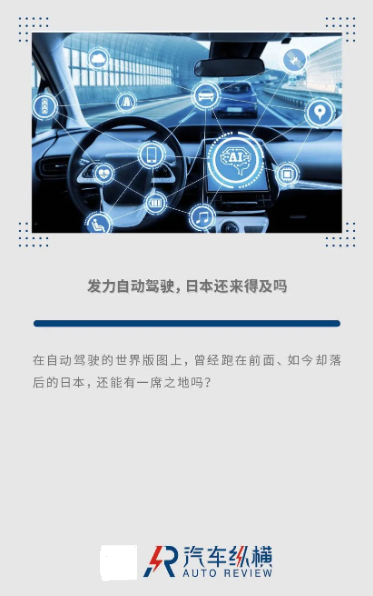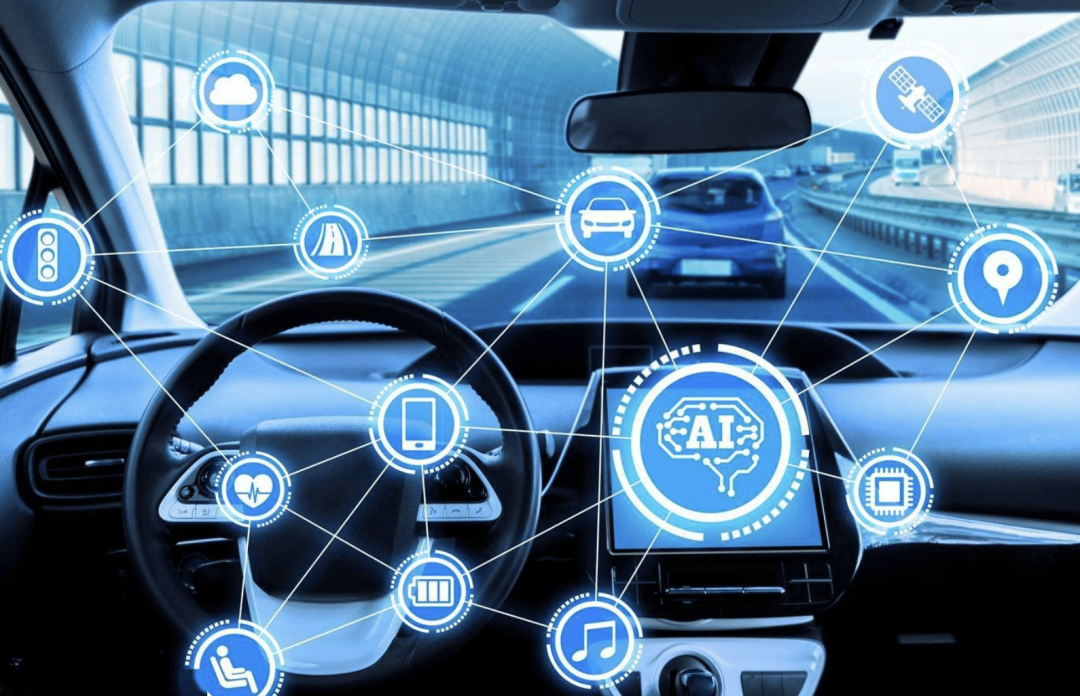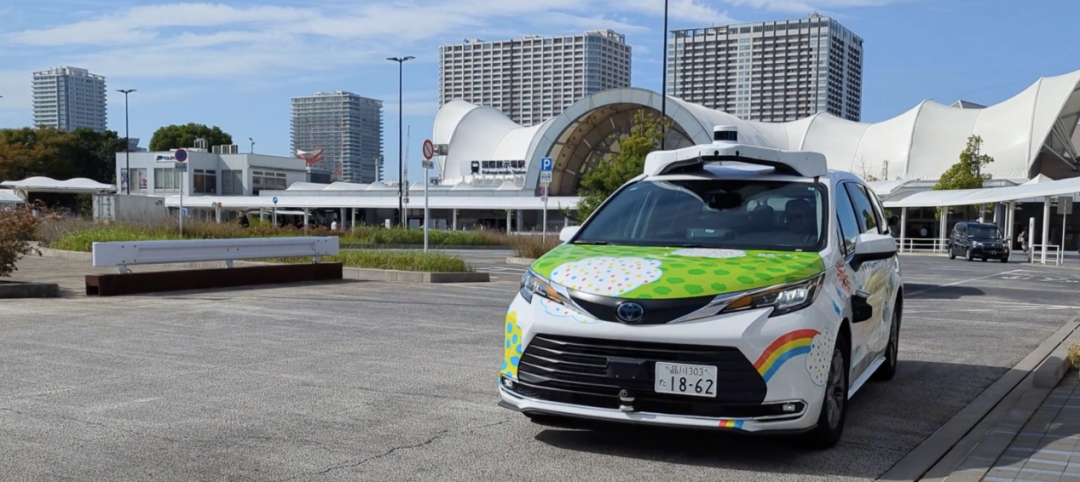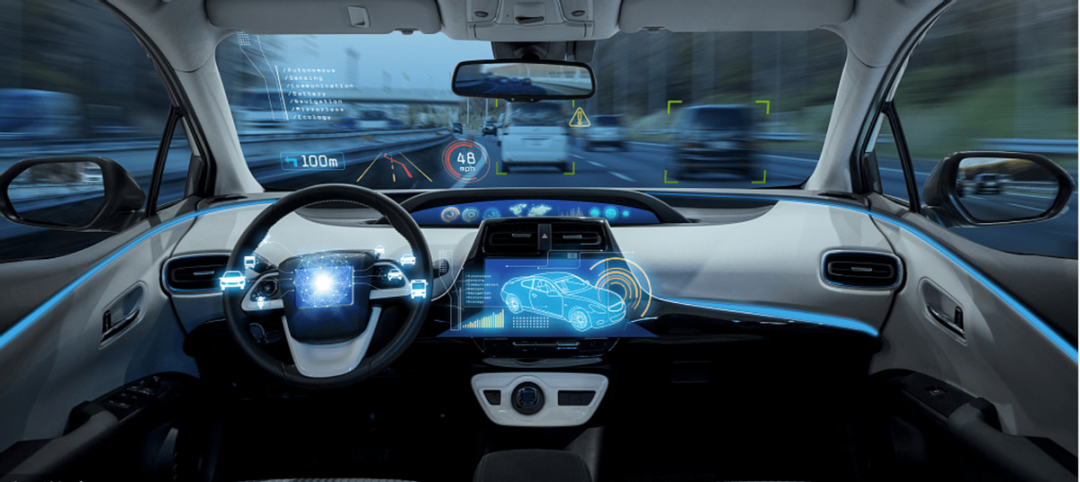Can Japan Still Catch Up in Autonomous Driving?
![]() 06/09 2025
06/09 2025
![]() 502
502

"Japan will form an alliance of automobile manufacturers to develop artificial intelligence (AI) autonomous vehicle technology." On June 3, according to foreign media reports, with the support of the Japanese government, Toyota, Honda, and other Japanese automakers will collaborate on AI autonomous driving technology, jointly build AI infrastructure, and cultivate related talent. The Japanese government plans to support this R&D mechanism through financial subsidies and other means.
Forming alliances when necessary has become a crucial strategy for the Japanese automotive industry, and even Japanese industry at large, to exert its efforts. The focus on autonomous driving is largely driven by the realization that Japan has "fallen behind" in the race for this technology. In 2023, Taro Kono, then the Minister of Digital Economy in Japan, bluntly stated that Japan lags behind other developed countries in the introduction of autonomous driving technology, and that the Japanese automotive industry "is seriously lagging behind in the wave of technological innovation."
Tesla's autonomous taxis are poised to hit the roads in the United States, while China's robotaxi, already operational, not only operates without safety officers but has also entered a new stage of commercial route validation. In contrast, with the market, technology, and talent related to autonomous driving all lagging behind, can Japan still carve out a niche on the world map of autonomous driving?

Perseverance Amidst Challenges
Japan's lag in the electric vehicle era may be attributed to a misallocation of technological focus, but in the realm of autonomous driving, Japan has steadfastly maintained its direction and determination.
As early as the late 1980s to early 1990s, Japan had embarked on exploring intelligent transportation systems. The "Advanced Safety Vehicle" project (ASV), proposed at that time, ultimately failed to achieve large-scale commercialization due to technological limitations. In 2013, Japan unveiled the "World Leading ITS (Intelligent Transportation System) National Creation Declaration." In May 2014, the Japanese government launched the cabinet-level SIP-Strategic Innovation Promotion Program, aiming to foster seamless research and development from basic and applied research to commercialization through cross-sectoral collaboration. In 2023, the amendment to Japan's Road Traffic Law came into effect, beginning to lift the ban on L4 autonomous driving under specific conditions such as routes and speed. In May 2024, the Ministry of Economy, Trade, and Industry of Japan announced a strategic plan for the digital transformation of the Japanese automotive industry, setting a sales target of 12 million Japanese vehicles globally by 2030, accounting for 30% of the global market share, for the new generation of vehicles known as "SDVs."
Simultaneously, the Japanese government has been actively conducting demonstration operations of autonomous buses and other vehicles nationwide. In May 2023, Fukui Prefecture in Japan began providing Japan's first mobile service using L4 autonomous vehicles to the public, employing driverless 7-seater vehicles on a fixed route of approximately 2 kilometers. In November of the same year, Gifu City, Japan, launched autonomous buses to provide shuttle services for citizens, equipped with L2-L4 autonomous driving systems and primarily operating in downtown areas. In February 2025, Japan announced that it would begin verifying the use of autonomous vehicle priority lanes on the Shuto Expressway from March, taking the first step towards constructing lanes that support autonomous driving services.
In July 2024, media reports stated that the draft of the digital administrative and fiscal reform compiled by the Japanese government clearly stipulated that all prefectures must promote L4 autonomous driving technology under specific conditions by the end of 2025. This underscores the Japanese government's determination and courage to claim the technological "pearl" of autonomous driving. However, regrettably, Japanese media believes that Japanese automakers, with greater concerns about safety, have so far been cautious about AI autonomous driving, leading to slow progress. As one of the world's leading automotive manufacturing powers, Japan has not yet kept pace with the shift towards autonomous driving led by China and the United States.
Collaborative Efforts to Boost Autonomous Driving Technology
In fact, this alliance is not the first formed by Japan to develop autonomous driving technology. In 2018, Toyota Motor Corporation teamed up with SoftBank in Japan to establish Monet Technologies, Inc. (hereinafter referred to as Monet). Subsequently, other automakers such as Hino Motors, Isuzu, Subaru, Daihatsu, Mazda, and Suzuki invested in Monet. Monet also established a mobility services alliance based on autonomous driving technology, the "MONET" alliance. As of September 2020, over 600 companies had joined, making it a genuine "Japanese national team for autonomous driving."
What are the results?
In January of this year, Monet announced the free opening of a pilot service for L2 autonomous passenger transportation to the general public in the Tokyo Waterfront City Center area. Reservations can be made through a mobile app, and the service is provided by two Toyota Sienna MPVs equipped with L2 autonomous driving, carrying up to five passengers at a time and operating at a speed of 40 km/h, with a driver available to operate the steering wheel and brakes at any time. Setting aside the technical level, such a fleet size cannot even compare to a single autonomous driving startup in China.

Monet is not the only alliance previously established. In December 2023, 12 Japanese automakers, including Toyota, launched joint research and development of cutting-edge semiconductors for autonomous driving and other purposes, establishing a new organization called the "Research Consortium for Advanced SoC Technologies for Automobiles." Members include five automakers (Toyota, Nissan, Honda, Mazda, and Subaru), two electronic component manufacturers (Panasonic Automotive Systems and Denso), and five semiconductor companies (Renesas Electronics, Socionext, and Synopsys Japan). The organization aims to establish key technologies through trial production and verification by 2028 and mass-apply SoCs (System on Chip) to automobiles after 2030.
In October 2024, Toyota, Honda, and Nissan reached an important agreement to strengthen cooperation in automotive software development. They will share technologies in seven areas, including AI (Artificial Intelligence), chips, virtual simulation, and high-precision 3D maps for autonomous driving, thereby reducing development costs. At that time, Japanese media commented on this cooperation, stating that it marks an acceleration in the integration of resources and technologies by Japanese automakers in the face of global technological competition, with the aim of making breakthroughs in software development and application. The Ministry of Economy, Trade, and Industry of Japan also believes that Japanese manufacturers have abandoned nationalism and begun to emphasize digital collaboration with other enterprises. The field of SDV technology is extensive, and it is difficult for a single enterprise to develop independently.
Collaborative Research and Development Aims to Go Global
However, Japanese automakers have realized that domestic alliances alone cannot meet the need to catch up with their peers. Only by collaborating with autonomous driving-related companies in other countries and introducing and absorbing more advanced technologies and business models can they hope to maintain their past status as a powerful nation in the automotive industry.
On April 30 of this year, Toyota and Waymo, an American driverless technology company, announced a collaboration in the field of autonomous driving to jointly develop a new autonomous driving vehicle platform. The two parties will also explore how to utilize Waymo's autonomous driving technology and Toyota's automotive expertise to enhance the performance of the next generation of personal driving vehicles (POVs). The scope of cooperation will continue to expand through ongoing discussions.
Chinese component companies have also been able to enter the supply chain system of the Japanese automotive industry, with Momenta being one of them. It is understood that all three major Japanese automakers have reached cooperation agreements with Momenta. Among them, the GAC Toyota Bozhi 3X and Dongfeng Nissan N7 equipped with Momenta's solution have been officially launched recently. Next, all of Honda's models in the Chinese market, Toyota's independently developed electric vehicles in the Chinese market, and subsequent Dongfeng Nissan's self-developed new energy vehicles are highly likely to choose Momenta as their intelligent assisted driving supplier.
In addition to collaboration, Japanese automakers have also actively made strategic investments in Chinese technology companies. In November 2018, Alliance Ventures, an open innovation investment fund jointly established by Renault, Nissan, and Mitsubishi Motors, announced an investment of US$30 million in Guangzhou-based WeRide, acquiring a 6% stake in the company. In 2020, Pony.ai received a US$400 million investment from Toyota and jointly established the joint venture "ZhuiFeng Intelligent Technology" in April 2024 with a total investment of over RMB 1 billion. Pony.ai holds 50% of the total investment and will jointly develop the pure electric vehicle "bZ4X."
It is worth mentioning that, in addition to collaboration, Japanese automakers are further enhancing their intelligence levels by directly establishing R&D centers overseas to fully leverage local market, technology, and talent advantages. In 2023, Toyota Motor Corporation's largest R&D base in China, "Toyota Motor Engineering & Manufacturing (China) Co., Ltd.," was renamed "Toyota (China) Investment Co., Ltd. Smart Electric Mobility R&D Center." Engineers from the three R&D bases in China will also be assigned to the new company to strengthen localized development of various types of electric vehicles. Ueta Tatsuro, General Manager of the China Business Division, said, "The Chinese market is developing at an unprecedented pace. We will not only share our development achievements and learning experiences in China but also globally."
A Journey with Many Challenges
Let's revisit the initial question of this article: Does Japan have any hope of occupying a place on the world map of autonomous driving?
The answer should still be yes.
On the one hand, as a traditional automotive powerhouse, Japan's automotive industry boasts a long history and a solid brand reputation. Before smart cars completely disrupt the original automotive products, Japanese cars will continue to be popular globally. On the other hand, even in the field of autonomous driving, Japan is not completely unprepared, possessing numerous research and development patents. Notably, before October 2021, Toyota held the world's largest number of autonomous driving patents, surpassing Chinese and American automakers.
However, it is undeniable that the Japanese automotive industry also faces numerous challenges. Firstly, the autonomous driving test vehicles conducted in Japan are mostly buses, while China and the United States have used passenger vehicles such as taxis from the outset. Buses have fixed routes and relatively simple and controllable road conditions, limiting the number of vehicles that can be deployed. In contrast, passenger vehicles like taxis have a wider range of travel and more complex actual road conditions, with more vehicles deployed based on travel demand, significantly increasing technical requirements and difficulty. But precisely because of this, automakers can collect a vast amount of driving data in a shorter period and solve the "long tail problem" of autonomous driving through deep learning of AI, accelerating technology improvement.
Secondly, the 2024 edition of the "White Paper on Science and Technology Innovation" (hereinafter referred to as the "White Paper") passed by the Japanese government's cabinet meeting states that although there are large enterprises leading innovation, Japan's startup ecosystem is not as vibrant as that of China and the United States, and Japan's venture capital market is relatively conservative, with investors favoring mature enterprises over startups. For example, Tier IV, a Japanese technology company founded in 2015, is a world pioneer in open-source autonomous driving (AD) technology and has received investments of tens of billions of yen, but compared to the tens of billions of dollars raised by Chinese and American companies, it pales in comparison.
Thirdly, the shortage of related talent has always been a weakness in Japan's digitalization efforts. According to statistics from Japan's Ministry of Economy, Trade, and Industry, there was a shortage of 300,000 IT talents in Japan around 2020, which is expected to expand to 450,000 to 800,000 by 2030, representing a 40% shortfall compared to actual needs. The "White Paper" believes that there has long been a perception in Japanese society that prioritizes hardware over software, leading to insufficient investment in AI algorithms and software development. From an educational perspective, Japan's education and research system focuses more on traditional engineering and technology education rather than data science and computer science, resulting in an insufficient supply of talent.

Ultimately, given the nascent stage of autonomous driving development, the industry is in dire need of comprehensive governmental support, encompassing both financial aid and policy frameworks. Nonetheless, local governments in Japan often struggle with insufficient funding, making it challenging to provide large-scale assistance and, at times, even impeding progress. A prime example is Toyota's significant investment in its "woven city" project, a fusion of intelligent connected vehicles and smart city concepts, situated on its own land in Susono City, Shizuoka Prefecture. Regrettably, this initiative faced opposition from the newly appointed mayor of Susono City, who cited the delayed realization of project benefits and unilaterally announced in September 2023 that the city would withdraw from the project. Moreover, Japan must urgently address the need to enhance and mature the infrastructure for intelligent and connected vehicles.
The journey ahead for autonomous driving technology is lengthy and fraught with challenges. It remains to be seen whether Japan can effectively leverage the strengths of others, accumulate its own capabilities, and ultimately emerge as a key player in the global autonomous driving automotive industry.

Images: Sourced from the internet
Article: Auto Review
Typesetting: Auto Review







